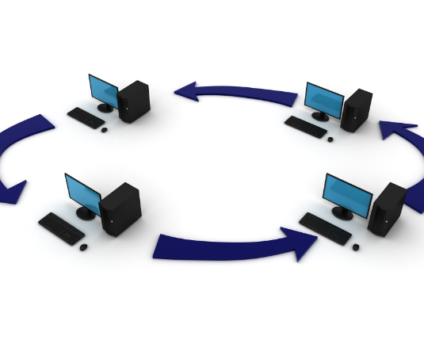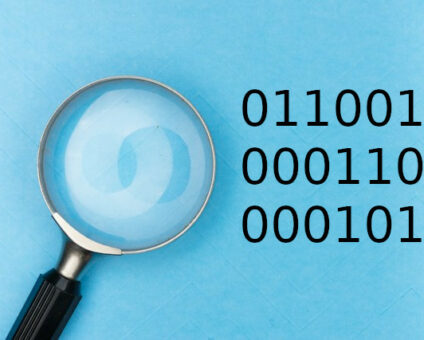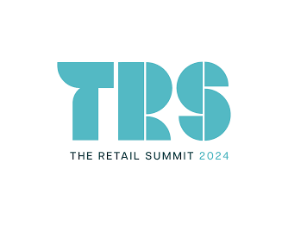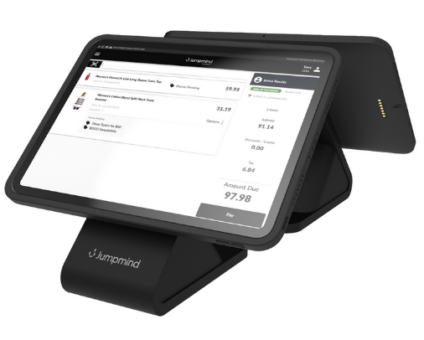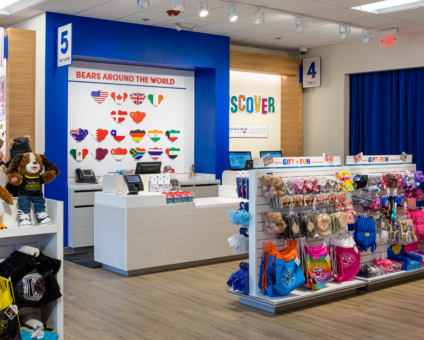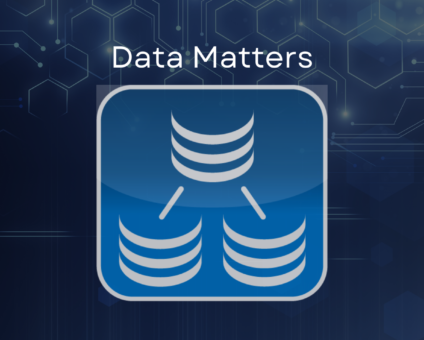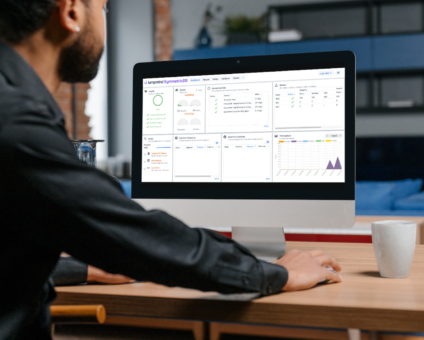Retailers are constantly looking for new ways to generate revenue and stay competitive. One strategy …
![]()
Cloud-native POS platform for seamless omnichannel customer experience.
![]()
A single hub for all promotions campaigns.
- Omnichannel ExperienceCreate seamless customer experiences
- Device IndependencePOS agnostic to form factor or operating system
- Self-CheckoutDo more with fewer associates
- Mobile StoreLeverage POS from anywhere
- POS on the GoEnable associates to sell outside of the store
- Unified PromotionsStreamline and simplify promotion workflows
- CX ConnectAllow customers to engage with POS during checkout
- Composable CommerceCreate the store experience you want
![]()
The most advanced synchronization solution for databases and file systems.
![]()
Data configuration and batch automation across different disparate systems and vendors.
-
Data Replication
- Multi-tier DistributionReplicate thousands of remote locations
- Cloud Database ReplicationCapture live changes from on-premise to the cloud
- High Availability and Load BalancingEnsure 24/7 access to data and scale efficiently with demand
- Analytics and ReportingCapture the whole picture with real-time reporting
- Multi-masterMaintain consistency of data in a peer to peer setup
- Data WarehouseReplicate live and historical data to a warehouse
- MigrationsConduct live data migration with no downtime
-
-
Data Integration
- Master Data ManagementChanges propagate across the entire system, allowing you to maintain a centralized view of all parts of your core business entities.
- Application IntegrationReduce dependencies, complexity, and risk to build a high-performance, data-driven application.
- Web ServicesIntegrate multiple systems using web services or build a business application using a service-oriented architecture.
- Data WarehouseIntegrate disparate data from multiple systems so you can transform data for better business intelligence and reporting.
- Data MigrationConduct live data migration during critical server replacements, storage upgrades, and data center relocations—with no downtime.
- ImplementationIntegration consultants help design, develop, and deploy an implementation of our products.
- DevelopmentThe product developers can add features, enhance existing functionality or build support for new platforms.
- TrainingEngage our experienced training resources to gain in-house knowledge and expertise on Jumpmind products.
- SupportLeverage product engineers to resolve issues, fix defects and provide updates or patches.
- Proof of ConceptDetermine the feasibility of implementing our products and get answers to your questions quickly.
Clienteling isn’t a new theory. It can be traced back hundreds of years when shopkeepers …
BOPIS, BORIS, and Curbside Pickup offer consumers and retailers the best of both worlds. …
View all Blog Posts
The SymmetricDS product can synchronize data between over forty different database platforms with out of …
Compare and Repair for SymmetricDS Pro can compare two databases, report on the differences, and …
Mobile replication with Android edge devices in near real time to an on-premise or cloud …
View all Blog Posts
Jumpmind President and CEO Joe Corbin to Lead Panel on Agility at Scale and Digitalizing …
Retail Technology Leader Jumpmind Brings Newfound Interactive and Personalized Digital Engagement to Inspire Shoppers at …
Retail Technology Leader Jumpmind Provides Enhanced Experiential Point of Sale and In-Store Engagement for Build-A-Bear Workshop …
View all Blog Posts
![]()
Cloud-native POS platform for seamless omnichannel customer experience.
![]()
A single hub for all promotions campaigns.
![]()
The most advanced synchronization solution for databases and file systems.
![]()
Data configuration and batch automation across different disparate systems and vendors.
-
Data Replication
-
-
Data Integration
-
Retail Retail trends, technology, and enhancing the customer experience
-
Data Thoughts on data matters, dialects, performance, and security
-
Case Studies How Jumpmind impacts the businesses of our clients
-
Videos & Webinars Watch on demand demos, reviews, and tours of our products
-
Company News Get the scoop on Jumpmind's growth and impact
View all Blog Posts
What’s New in SymmetricDS 3.15
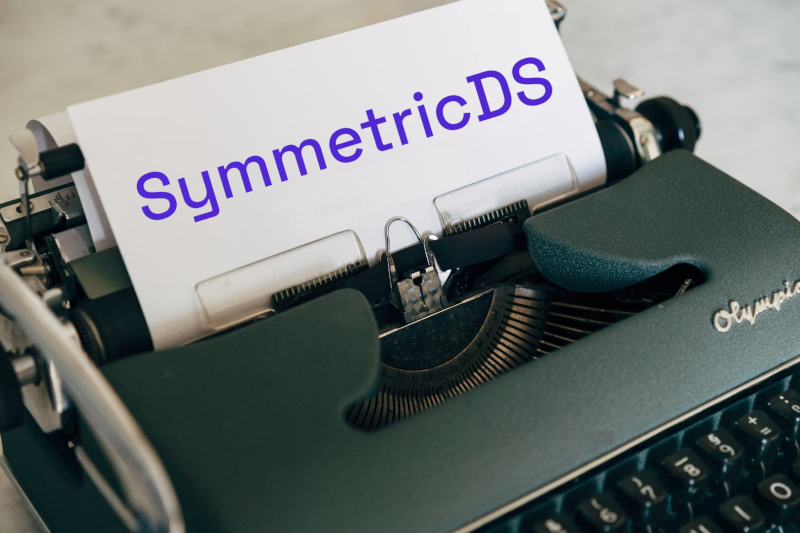
The new release of SymmetricDS Pro 3.15 data replication software enhances change data capture, uses AI-based recommendations for optimization, and includes data validation with compare and repair. This release will help you:
- Compare and repair data between two or more databases
- Optimize and enhance the system with insights
- Replicate data from MariaDB and DB2 for i using log mining
- Capture data from and load data to Progress OpenEdge database
- Secure access to web console users with new permissions and login capabilities
Compare and Repair
Compare and repair data between a source database and one or more target databases. Select which tables to compare, the level of inspection, a schedule to run, and a report level with the option to repair data. Comparison uses checksums at a table or chunk level to minimize use of the network before matching at the row level. The number of parallel threads are selected per request and per server to help improve comparison performance. A report of matching, different, missing, and extra rows is produced, including a SQL file of changes that are viewable or applied automatically to the target database.
Insights
Optimize and enhance data replication performance using proactive recommendations that can take action on behalf of the user when approved. The user can choose to approve actions, schedule reminders for a later time, or dismiss them. Insights are collected across all nodes in the system and use pattern matching and rules collected from support cases.
Log Mining from MariaDB and DB2 for i
Flexible database replication lets you choose between log-based or trigger-based change data capture for MariaDB and DB2 for i (AS/400, iSeries) databases. Log mining uses the binary log from MariaDB and journals from DB2 for i. Log-based data replication is now an option when minimal overhead and high throughput are required. The node wizard sets up log-based replication and guides you through required database permissions. The same powerful configurations are available for either option, including selection of tables, columns, data subsets, conflict management, and data transformation.
Progress OpenEdge Change Data Capture
Replicate changes from Progress OpenEdge database or load data from multiple data sources into it. OpenEdge is a relational database management system with a 4GL programming language for building business applications. Integrate OpenEdge into your enterprise data strategy with data replication and streaming ETL functionality. This dialect has bi-directional support that includes change data capture, sub-setting, transformations, and initial loads.
Security Improvements
Secure access to web console users with new permissions for creating users and logging in. Users can be put into a hierarchy of roles, giving them permission to create or modify users at or below their current role, giving a department responsibility for its own users. To safeguard and audit production access, a “break glass” user can be created that requires another user to break the glass for a temporary, time-limited password. Users can now login with single sign-on (SSO) using the SAML security standard with a third party identity provider.



